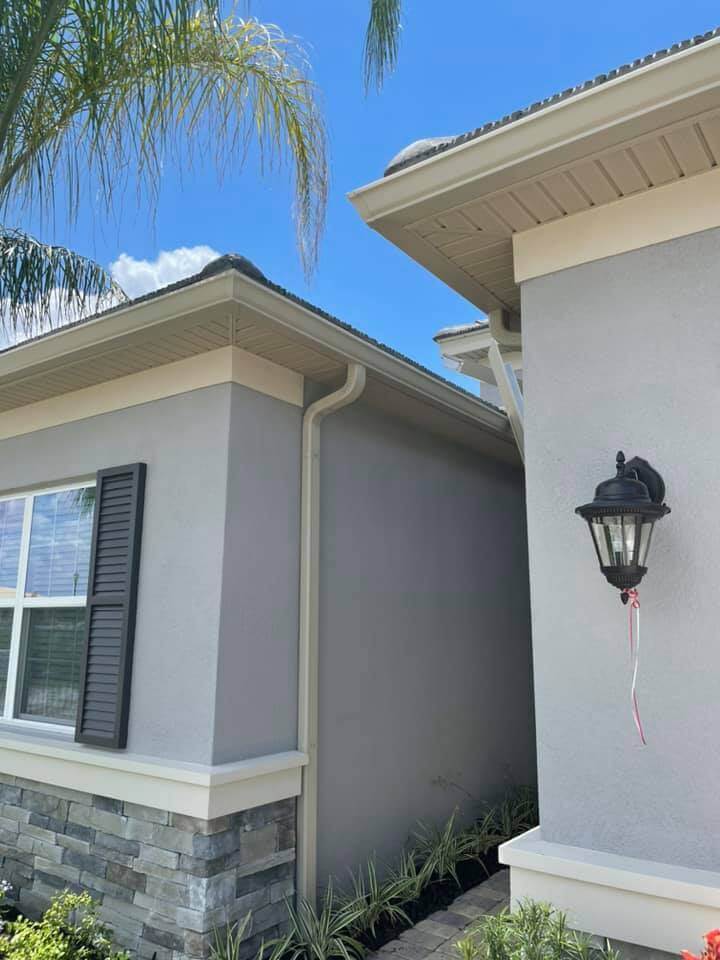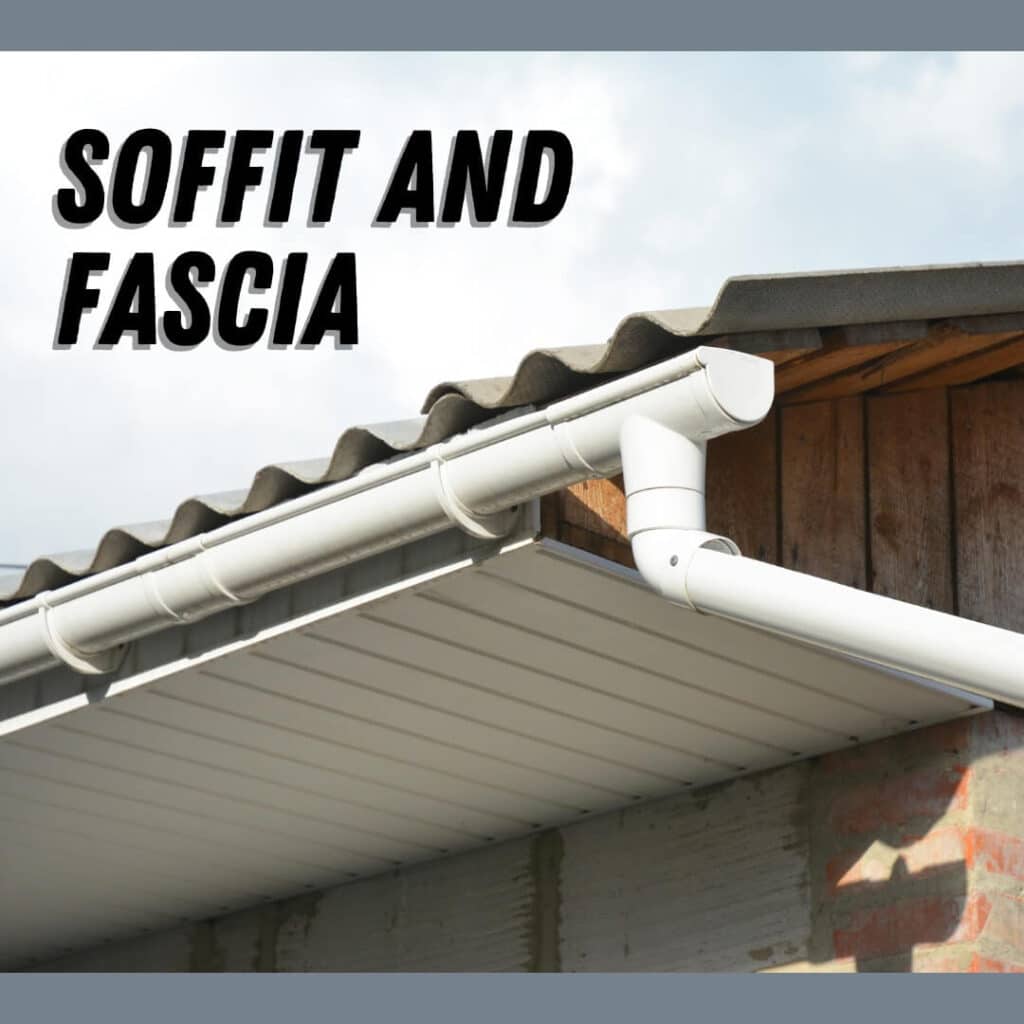If you own a home in St. Petersburg, Florida, you’ve likely gotten used to the salty breeze, warm sunshine, and the occasional tropical downpour. But while you’re enjoying everything that living near the coast has to offer, your home’s exterior — particularly your soffits — could be telling a very different story.
Soffits might not be the most glamorous part of your house, but they play a crucial role in protecting your roof and keeping your attic properly ventilated. When they start to fail, the consequences aren’t just cosmetic. We’re talking about serious structural problems, moisture buildup, and even pest invasions.
So, how do you know when it’s time to replace your soffits in sunny St. Pete? Let’s take a deeper look at the signs, the causes behind them, and what you should do before a small problem turns into an expensive headache.
What Is a Soffit, and Why Does It Matter in Florida?
Before we dive into the red flags, let’s talk basics. The soffit is the horizontal board tucked under the eaves of your roof — the part you see when you look up at the edge of your home. It covers the underside of your roof’s overhang and often contains vents to allow airflow into the attic.
In a climate like St. Petersburg’s, where high humidity, salt air, and seasonal storms are the norm, soffits are constantly battling moisture and heat. They help prevent mold by allowing proper ventilation, keep pests out, and even play a part in managing your home’s overall energy efficiency.
When soffits go bad, everything from attic airflow to roof integrity can suffer. So, how can you tell when your soffits are calling it quits?

Signs Your Soffits Needs Replacing
1. Visible Cracks, Warping, or Sagging
This is usually the first and most obvious sign. If you look up and notice the soffit panels are no longer flush with the house, that’s a problem. Cracks, bowing, or sagging sections aren’t just unattractive — they’re indicators that the materials have been weakened by moisture or age.
In St. Petersburg, the intense UV exposure and heavy rains wear down materials faster than in drier climates. Over time, wood and even some vinyl soffits may begin to deform, leaving gaps where pests and moisture can enter.
2. Peeling Paint and Water Stains
Take a stroll around your home and look under the eaves. See any peeling paint? Brownish stains? These are telltale signs that water has infiltrated the soffit. Moisture might be seeping in from overflowing gutters, roof leaks, or even from wind-driven rain during one of Florida’s frequent storms.
Left unchecked, this moisture doesn’t just ruin the soffit — it can rot the wood beneath your roofline and create a breeding ground for mold and mildew. If you’ve been patching or repainting the same area more than once, you’re likely past due for a full soffit replacement.
3. Mold and Mildew
Florida’s subtropical climate creates a perfect storm for mold growth. If your soffits have dark streaks, spots, or a musty smell nearby, you may be dealing with hidden mold. That mold doesn’t just stay outside — it can spread into your attic insulation and ductwork, triggering respiratory issues and costly remediation.
Even if the mold isn’t visible, any black discoloration or mildew smell near your roofline should be taken seriously. At that point, it’s less about repair and more about replacement and prevention.
4. Pests Nesting or Entering Through Soffits
It’s not just the tourists that love the St. Pete sunshine — rodents, birds, wasps, and insects do too. Damaged or rotting soffits make it easy for critters to enter your attic or nest inside the eaves.
If you hear scratching sounds in your attic or notice bird droppings around your roofline, you might have uninvited guests making themselves at home. Soffits are supposed to keep your attic sealed — when they’re compromised, so is your home’s security.
5. Leaky or Overflowing Gutters
Now, it might not seem obvious, but your gutters and soffits are closely connected. When gutters clog or leak, they often spill water directly onto the soffit. Over time, this constant exposure will deteriorate the material, especially if it’s wood-based.
In many St. Petersburg homes, poorly maintained gutters are a leading cause of soffit rot. So if your gutters seem to always be overflowing, it’s worth checking whether your soffits are suffering the consequences.
6. A Rise in Indoor Humidity
If your home feels muggier than usual, even with the AC blasting, your soffits might be part of the problem. Why? Because soffits help ventilate your attic — and when airflow is restricted by damaged panels, moisture gets trapped.
That trapped moisture raises your indoor humidity, encourages mold growth, and can even cause your HVAC system to work harder. It’s a chain reaction that starts with what looks like a minor issue outside and ends with discomfort (and higher energy bills) inside.
7. Rotten Wood or Structural Weakness
Unfortunately, by the time you notice wood rot, the damage is often deep. If you poke at the soffit and it crumbles, flakes, or feels soft to the touch, it’s no longer doing its job. Rotten wood compromises not just the soffit itself, but the surrounding structure, including fascia boards and even parts of the roof.
This is especially concerning in older St. Petersburg homes, where original materials may not have been built to withstand decades of Florida’s relentless moisture.

Why Soffit Issues Are a Bigger Deal in St. Pete
Here in St. Petersburg, coastal weather isn’t just a backdrop — it’s a force your home battles daily. The salty air corrodes metal faster. The high humidity accelerates wood rot. And summer storms can dump several inches of rain in an hour.
Combine that with the fact that many homes in the area were built decades ago, and it’s easy to see why soffit failure is a common issue. Routine maintenance can help, but once the signs are there, replacement is often the smarter — and safer — move.
Don’t Let a Small Soffit Problem Turn Into a Costly Repair
Soffit damage might seem like just another exterior quirk. But the truth is, it’s a critical component of your home’s defense system. Ignoring the signs can lead to bigger issues — water damage, pest infestations, roof repairs, even structural rot.
The good news? Catching the problem early makes replacement faster, cheaper, and more effective.
If your soffits are sagging, stained, or just plain falling apart — call Greater Gutters to schedule your free inspection online.
We’re local, licensed, and we understand the specific challenges Florida homes face. Let’s get your home back in shape before the next storm rolls through.
